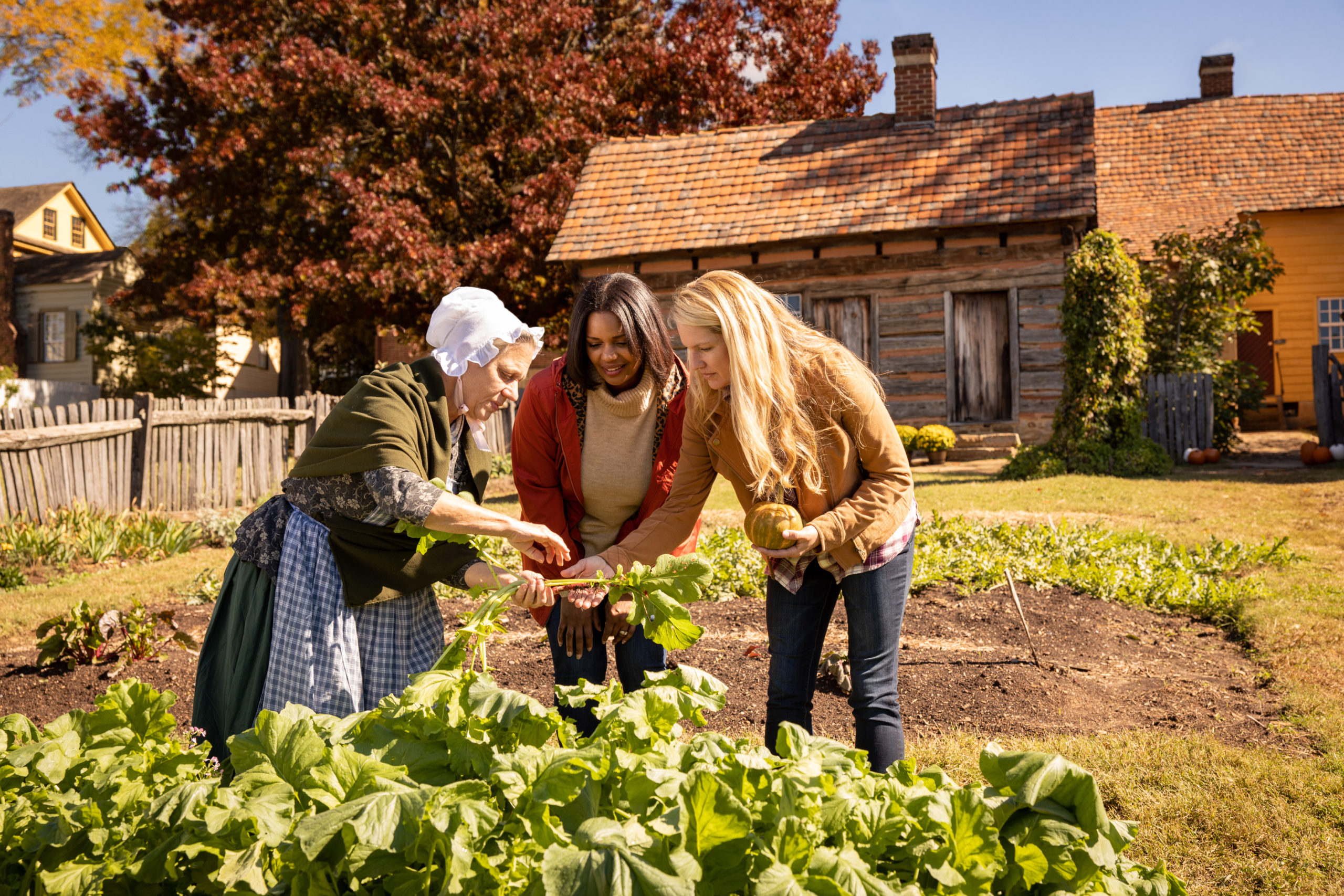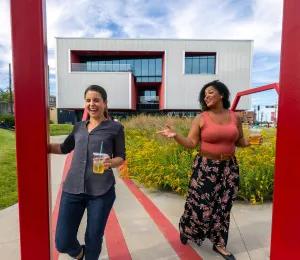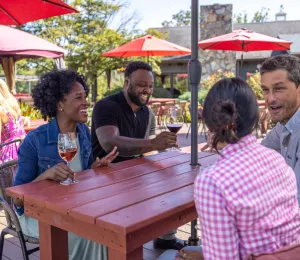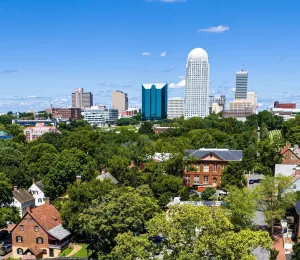Saving Seeds, Sowing History: The Stories of Homowo
When local historians asked a nearly 80-year old lady to review the proposed seed list for the African/American seed collection, she was thrilled to re-discover a long-lost memory: “Oh that’s Mr. Dave’s butter bean,” she recalled easily, “I haven’t known about it since he died.” Using little more than memory of food and family traditions, she and others in the local community led by Master Gardener Irma Jackson, identified and shared stories of heirloom plants and foods, ultimately forming a crucial historical connection between Winston-Salem, North Carolina and the peoples, cultures and culinary traditions of Africa.
To think it all started with a handful of seeds.
Officially launched for visitors in 2013, the Homowo Harvest Seed Collection honors garden heritage and the practice of saving and exchanging seeds. For nearly 50 years, heirloom gardens have been cultivated in the historic Winston-Salem district known as Old Salem Museums & Gardens. As a working historical district, Old Salem maintains these gardens that are open to the public. Part of their preservation involved upholding the Moravian tradition of saving seeds from one harvest to replant for the next.
“We’ve been saving and replanting seeds at Old Salem since the museum’s Horticulture Program was initiated in the 1970s,” explained Old Salem’s Head Gardener Eric Jackson. “What’s interesting is how much history we’ve uncovered just from the seed stories and plants themselves.”
Old Salem expanded on their seed saving program to explore the influence of African American culture and the impact of slavery on which crops grew where. The program was named Homowo, which is a word from Ghana’s harvest time that translates roughly as ‘hooting at hunger.’ The reference underscores the African heritage in the collection, as well as the joy of connecting people and cultures through food.
According to Martha Hartley, Director of Moravian Research at Old Salem, “The Homowo Seed Collection is African American culinary history, Southern history, American history, the legacy of slavery, and the local history of Winston-Salem all rolled into one.”
Seed saving and sharing became another way to honor the heritage of the gardens, tell the local history of the town, understand the legacy of slavery and illuminate the complex cultural influences at the heart of our most beloved Southern cuisine.
Saving seeds strengthens local cultivars over time by reinforcing positive attributes (drought resistance, cold hardiness, fruit color, abundance or shape). It also ensures the survival of less popular plants, which would be lost if not propagated here.
Just as they do throughout the museum, heirloom gardeners at Old Salem use all aspects of their historic property to tell the story of Moravian life in the late 1700s and early 1800s. For gardeners, that meant tilling, planting crops, harvesting, storing produce, saving seeds. Visitors listened with interest as interpreters shared the African connections to various beans, peas, watermelon, sesame, cabbage, okra, peanuts or peppers.
Enlisting the help of African American culinary historian and James Beard Book Award-winning author Michael W. Twitty, Old Salem expanded its understanding of the history of seeds from Africa and the culinary traditions of African Americans. Old Salem gardeners produced a potential seed list and then engaged the help of the local African American community, including avid gardeners like Irma and a native African, to review the proposed collection and refine it. Their first-hand experience and direct personal knowledge proved invaluable as historians weeded through the collection until landing on the perfect mix and a description of each plant in context. The Homowo Seed Collection is offered for visitors to plant in their own gardens. It includes heirloom seeds of plants native to Africa and heirloom seeds of plants traditionally associated with African American culinary traditions.
What’s In a Name?
Almost like a history lesson, seed saving and seed exchanges do more than preserve regional strains of plants for future gardens. They connect people and cultures to history through food in a way few other experiences can, and Old Salem has engaged the community with an annual seed swap since 2012.
Generations ago, long before garden centers and click-to-order web sites, farmers saved seeds after each harvest to ensure they had something to plant the following year. There simply was no other way to regrow a particular plant the next season. Over time, farmers began swapping seeds with each other, sharing the best of what they grew with neighboring communities and incorporating a little variety into their own crops. Favorites flourished. Rarities diminished. And portrait of regional tastes, cultures and preferences emerged.
That all this history should grow from plants is no surprise to the historical garden preservationists, who often use plant names as shorthand for promoting a particular variety.
Coded in each name is a rich tapestry of historical detail: how it grows, what it looks like, where it comes from, who it’s for. These clues help each generation of gardeners predict which plants will succeed in their climate, and in turn, help guide the palates — and the cultures — of the communities who grow them. Some of our favorites from the Homowo list include:
- Lazy Wife Greasy Pole Bean
known for hairless pods that grow in clusters, making them easier to pick - Fish pepper
a milder mutation of African Serrano pepper popularized in the Chesapeake region - Carolina Black Peanut
rare black-skinned peanut grown as a substitute for African black Bambarra - Georgia Rattlesnake Melon
a Southern favorite watermelon developed in the 1830s - Iron and Clay Cowpea
mentioned by George Washington Carver as a particularly hardy strain of field pea - Dragon’s Claw Finger Millet
Ethiopian grain used for cakes, porridge and beer - Kenyan Keybarika
hardy bush bean used for soups and baking - Black Amber Cane Sorghum
bicolor sorghum originating from the African savannas
To learn more, visit Old Salem Museums and Gardens online or visit the Seeds with Stories page.






